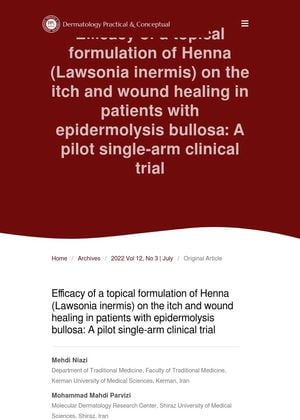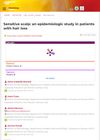Efficacy of Topical Henna on Itch and Wound Healing in Epidermolysis Bullosa Patients: A Pilot Clinical Trial
July 2022
in “
Dermatology practical & conceptual
”

TLDR Henna ointment may help reduce itching and improve wound healing in patients with epidermolysis bullosa.
A pilot single-arm clinical trial involving nine patients with recessive dystrophic epidermolysis bullosa (RDEB), aged between 5 and 32 years, investigated the effectiveness of a topical 1% henna (Lawsonia inermis L.) ointment in managing wounds and itching. The patients applied the ointment daily on two erosions and two sites with moderate to severe itching for four weeks. The results showed significant improvement in skin symptoms including redness, itching, burning, and local warmness (p-value<0.05). Local pain also decreased, but this was not statistically significant (p-value<0.19). One patient reported moderate skin dryness after continuous usage. The study concluded that the topical henna formulation may be effective in managing itching, burning, stinging, and cutaneous warmness sensation in patients with EB, but further controlled studies with larger sample sizes are recommended.

